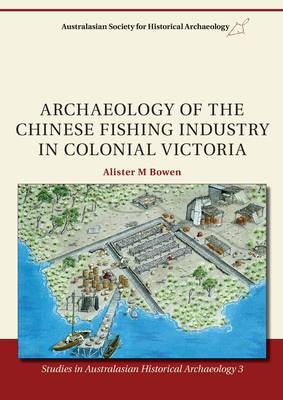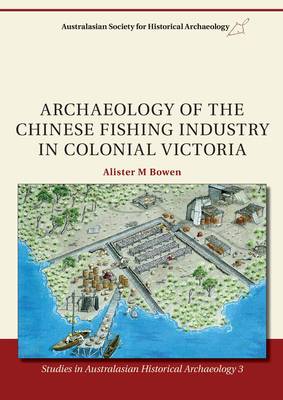
- Retrait gratuit dans votre magasin Club
- 7.000.000 titres dans notre catalogue
- Payer en toute sécurité
- Toujours un magasin près de chez vous
- Retrait gratuit dans votre magasin Club
- 7.000.0000 titres dans notre catalogue
- Payer en toute sécurité
- Toujours un magasin près de chez vous
Archaeology of the Chinese Fishing Industry in Colonial Victoria
Alister M BowenDescription
During the 1850s and 1860s, Chinese immigrants played a major role in the development of the fishing industries in Australia. Prior to their involvement, the industry was hampered by the problems posed by the transportation of fish to market. It was common for whole catches of fish to putrefy before they could reach their destination. The influx of Chinese gold miners, who relied on fish as a dietary staple, increased the demand that prompted the creation of many Chinese fish-curing establishments.
Chinese fish curers in colonial Australia fished but also purchased large quantities of fish, creating a new and reliable market for European fishermen. Fish-curing businesses supplied their compatriots on the goldfields with fresh and cured fish. These establishments, which made sums of money far greater than any European fishing operation, provided hundreds of jobs for both European and Chinese Australians in the fishing industry.
Very few pieces of documentary evidence, along with archaeological records from one colonial-period Chinese fish-curing camp in Victoria, remain. They reveal a fascinating story of how Chinese fish curers successfully dominated Australia's fishing industry; how they lived, worked, organised themselves, participated in colonial society, and the reasons why they suddenly disappeared.
Spécifications
Parties prenantes
- Auteur(s) :
- Editeur:
Contenu
- Nombre de pages :
- 192
- Langue:
- Anglais
- Collection :
Caractéristiques
- EAN:
- 9781920899813
- Date de parution :
- 28-11-12
- Format:
- Livre broché
- Format numérique:
- Trade paperback (VS)
- Dimensions :
- 210 mm x 297 mm
- Poids :
- 471 g

Les avis
Nous publions uniquement les avis qui respectent les conditions requises. Consultez nos conditions pour les avis.






